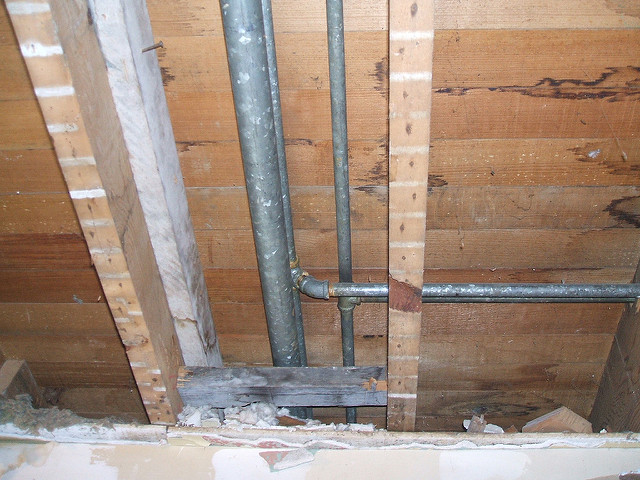6 Ways to Locate Concealed Water Leaks in Your House
6 Ways to Locate Concealed Water Leaks in Your House
Blog Article
How do you really feel in regards to Finding hidden leaks?

Early discovery of leaking water lines can alleviate a possible catastrophe. Some little water leaks may not be noticeable.
1. Examine the Water Meter
Every home has a water meter. Examining it is a proven way that assists you find leakages. For beginners, switch off all the water sources. Ensure nobody will certainly purge, make use of the tap, shower, run the cleaning machine or dishwasher. From there, go to the meter and watch if it will change. Since no one is utilizing it, there need to be no activities. If it moves, that indicates a fast-moving leakage. Also, if you detect no changes, wait a hr or more as well as check back once more. This implies you may have a sluggish leakage that might also be below ground.
2. Inspect Water Intake
If you find sudden changes, regardless of your intake being the exact same, it implies that you have leaks in your plumbing system. An abrupt spike in your expense suggests a fast-moving leak.
A stable rise every month, even with the exact same habits, shows you have a slow-moving leak that's additionally slowly intensifying. Call a plumber to extensively check your residential or commercial property, specifically if you really feel a cozy area on your floor with piping below.
3. Do a Food Coloring Examination
When it concerns water intake, 30% originates from bathrooms. Examination to see if they are running correctly. Decline specks of food shade in the storage tank and wait 10 mins. There's a leakage between the storage tank and bowl if the shade somehow infiltrates your bowl throughout that time without flushing.
4. Asses Exterior Lines
Do not neglect to check your outdoor water lines also. Test spigots by attaching a yard hose pipe. Ought to water seep out of the connection, you have a loose rubber gasket. Change this as well as make sure all connections are limited. It will certainly help get it skillfully checked out and preserved every year if you have actually obtained a lawn sprinkler system. One little leakage can waste tons of water and spike your water bill.
5. Examine and Analyze the Scenario
Homeowners need to make it a practice to check under the sink counters as well as even inside cupboards for any bad odor or mold and mildew growth. These 2 red flags suggest a leakage so prompt focus is needed. Doing routine assessments, also bi-annually, can conserve you from a significant issue.
Inspect for stainings as well as deteriorating as many pipelines and devices have a life expectancy. If you presume dripping water lines in your plumbing system, don't wait for it to intensify.
Early discovery of dripping water lines can mitigate a prospective calamity. Some little water leaks may not be visible. Inspecting it is a guaranteed way that assists you find leakages. One small leakage can throw away tons of water and spike your water bill.
If you think leaking water lines in your plumbing system, don't wait for it to escalate.
How to Know If Your Home Has a Hidden Leak
Water Meter Reveals Inexplicable Water Usage
If you’d like to test whether or not there’s a leak somewhere in your home, you can do this using your water meter. Here is how to conduct the test:
Don’t use any water in your home for at least 30 minutes; this also means not turning on faucets or water-using appliances.
Go outside, and check your water meter for activity.
If your water meter shows that there was activity, even though no one was using any water, this proves that there is a leak in your home.
Visible Mold or Mildew Growth
Leaks behind walls create moist, dark environments that allow mold and mildew to grow and thrive. Eventually, you might see mold growth forming on the wall closest to a hidden leak.
If mold is growing in an area that receives a high amount of moisture, such as a bathroom, it may simply be an indication that better ventilation is needed. However, if you see mold growth on a wall or the ceiling in an area where you would not expect, you probably have a hidden leak.
Musty, Mildew Odor
Sometimes you might not be able to see the mold or mildew that is growing as a result of a leak. However, the smell can give the problem away just as easily. If you catch a whiff of something musty, there’s a good chance that old water is collecting somewhere in your home that you can’t see.
Stained/Warped Walls, Ceilings, or Floors
When your home soaks up water, a variety of red flags can become visible, including ceiling stains, bubbling drywall, warped walls, and sagging floors. While these issues can be caused by excess humidity, they can also be signs that a pipe or plumbing connection has started leaking behind your walls.
Inexplicably High Water Bill
After a while, you get a general sense for what your water bill should be. If you own a pool or sprinkler system, your bill will tend to be higher during summer. However, if you receive a water bill that seems especially high, and you can’t figure out what caused it, then you may have a hidden leak somewhere that’s increasing your bill.
https://www.plumbingjoint.com/blog/2019/july/how-to-know-if-your-home-has-a-hidden-leak/

I'm very fascinated with Locating water leaks and I am praying you liked my article. So long as you enjoyed our blog posting if you please make sure you remember to share it. I am grateful for your time. Visit us again soon.
Report this page